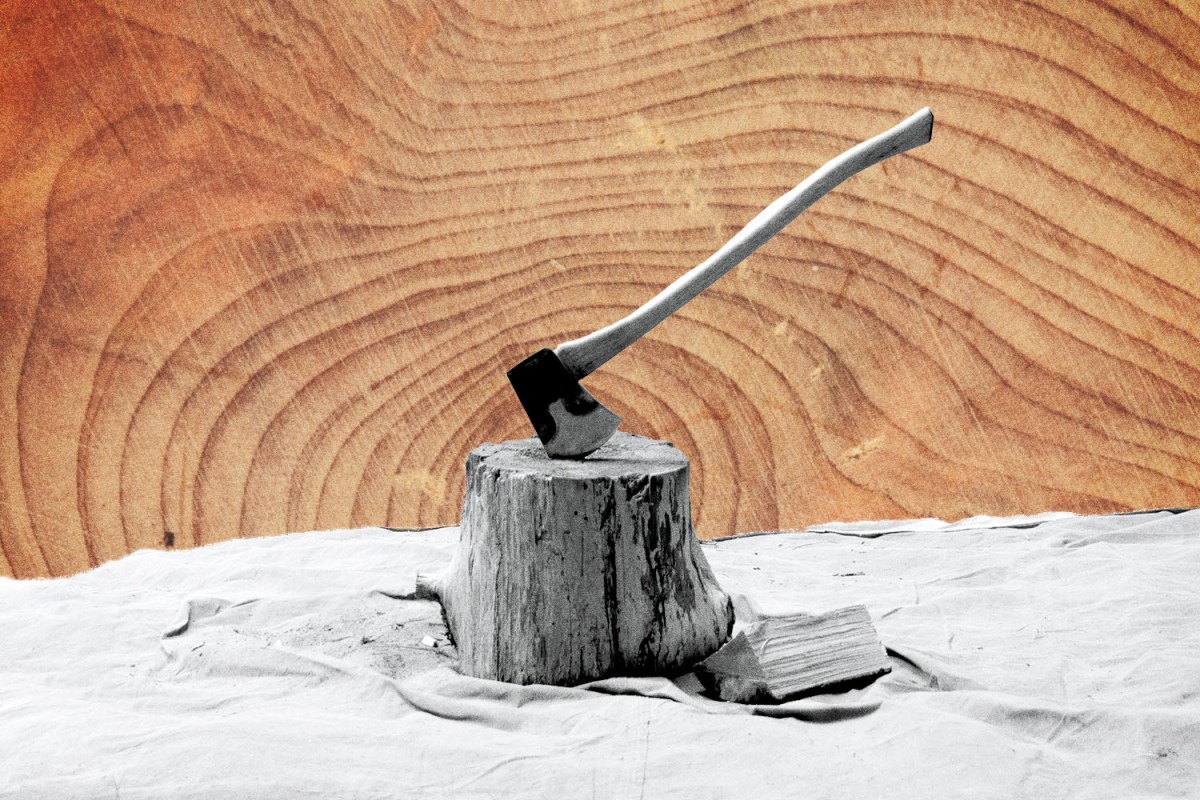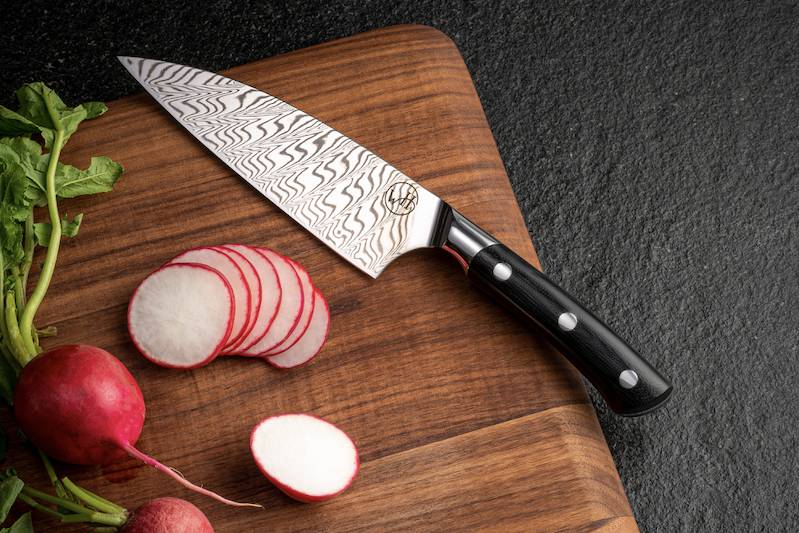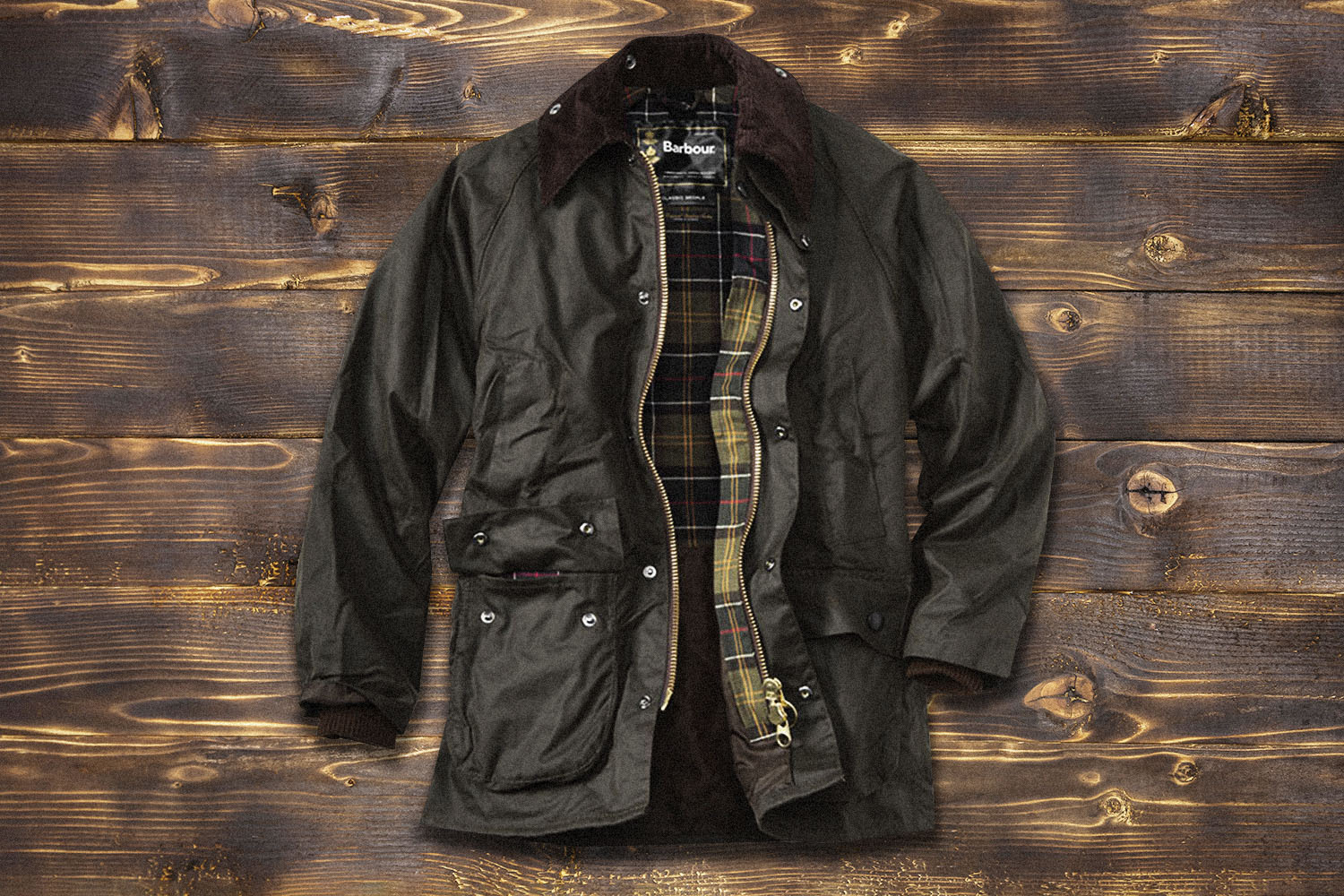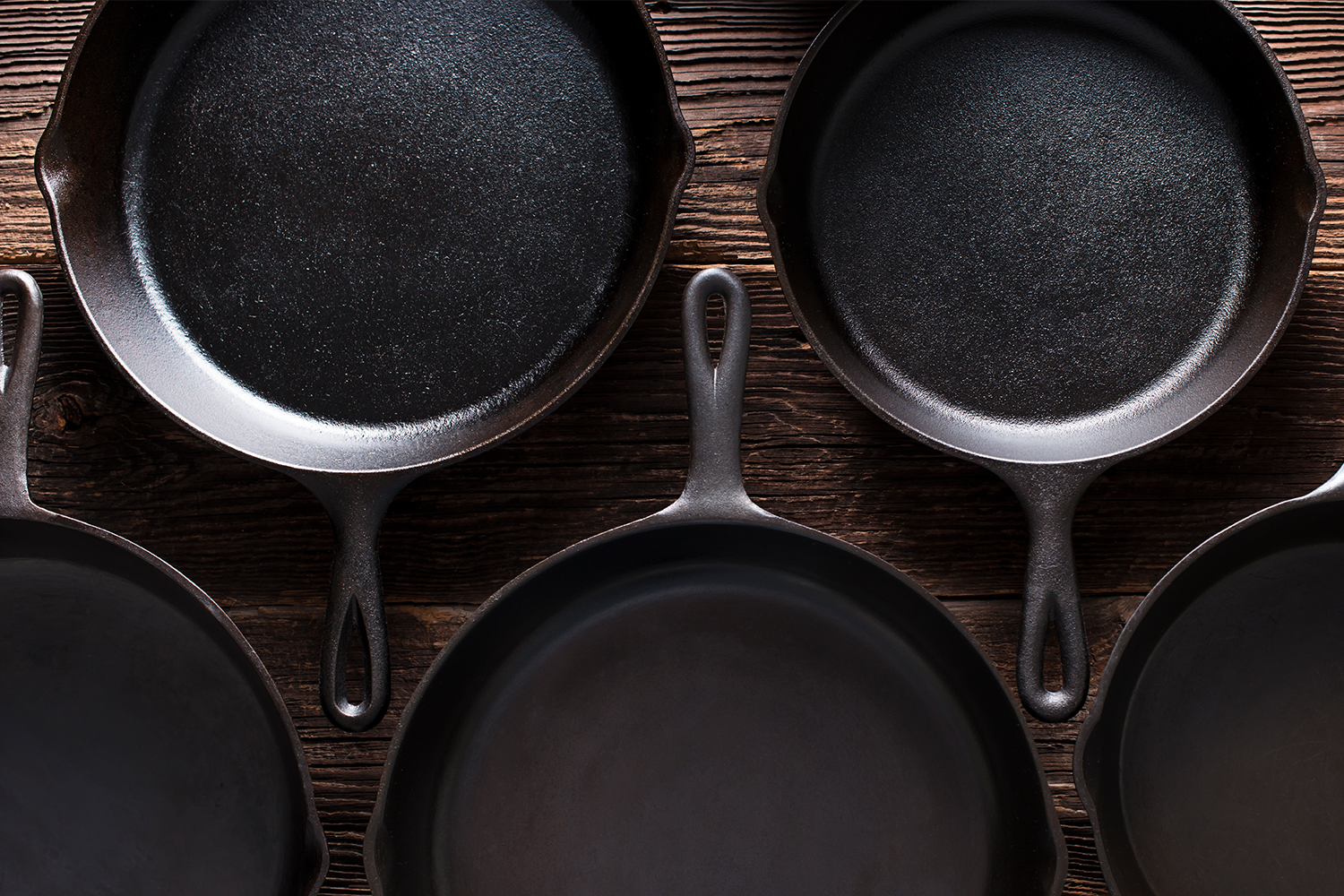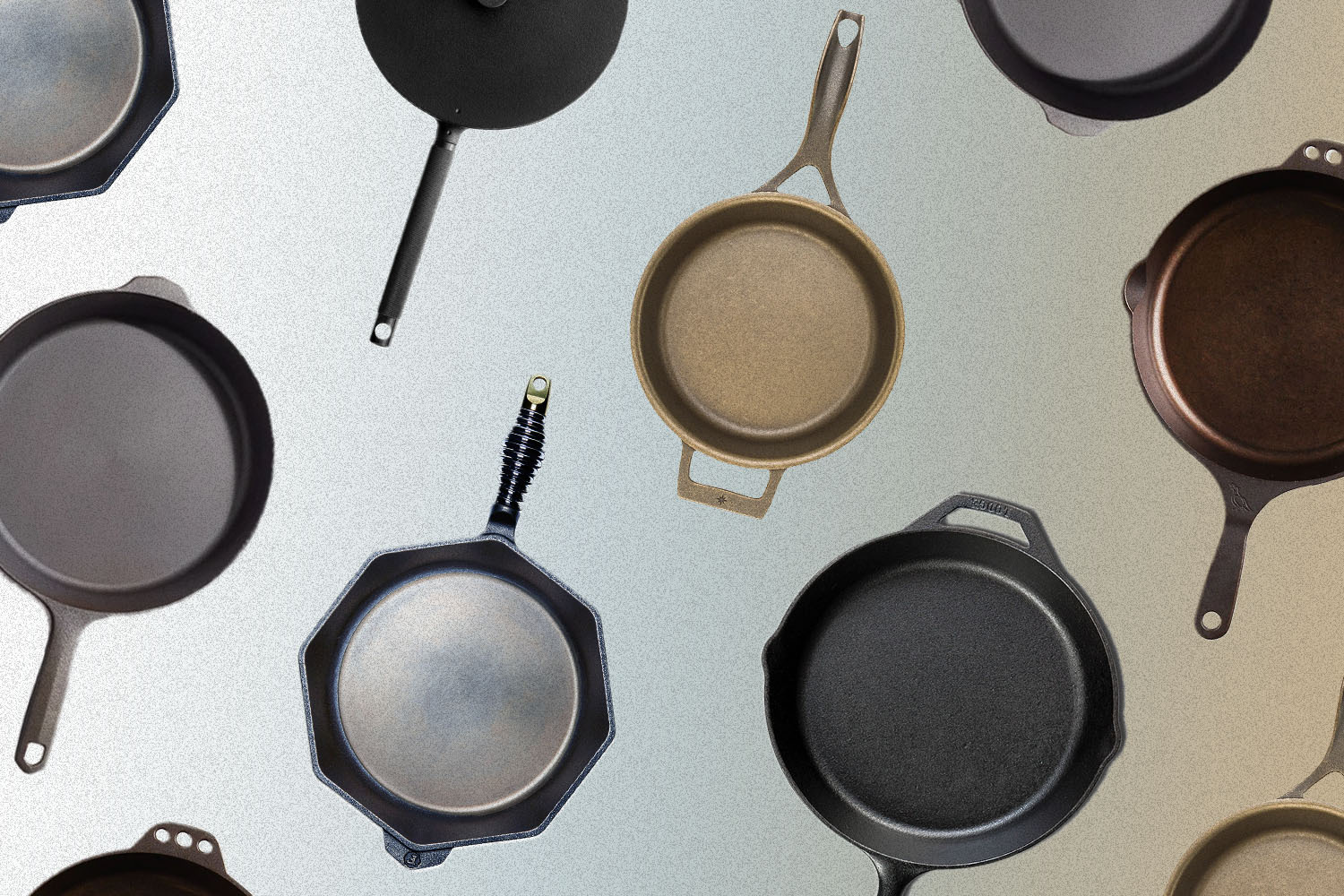The axe is a beautifully simple, culturally powerful and historically ancient tool. All an axe needs is 15 minutes of chopping wood in order to resuscitate the dormant hunter-gatherer inside its user. (What urbanite has not hacked through a fireplace cord while dreaming of moving to a remote cabin?) Which makes the modern axe-buying experience — grabbing whatever plastic-handled bargain the big-box home improvement store has in stock — all the more depressing.
Peter Buchanan-Smith wanted to offer a better way, which is why, 12 years ago, he launched Best Made Company with one product: American-made felling axes with helves painted in bright, bold, eye-catching colors and patterns. They were part art-object, immediately hung on gallery walls and snapped up by cultural heavyweights, but also authentic in their utility, forged by North Carolina’s Council Tool.
Now, two years after leaving the company that expanded into an aesthetically minded outfitter, Buchanan-Smith is coming full circle on his mission of restoring the axe to its rightful place, not as a simple piece of equipment that should be discarded and repurchased at whim, but as an heirloom tool to be respected, used, cared for and passed down.
His reasoning, as well as his wellspring of knowledge, has been carefully cataloged and artfully packaged in the new book Buchanan-Smith’s Axe Handbook: Knowing, Buying, Using, Hanging, Restoring, & Adorning, which is out May 11 through Abrams Image. By including his name in the title, he’s not profferring himself as the end-all authority on the subject; rather, as he notes in the foreword, it’s because the book is “the culmination of [his] personal learnings, so it’s purposefully subjective.”
One of these opinions runs contrary to the business model of the company he founded: that, for many people, buying an old axe and restoring it is much more rewarding than taking the easy way out and picking up something “shiny and new.” While Buchanan-Smith admits buying vintage “will require much more of you,” in this excerpt from the Axe Handbook, he outlines everything you need to know to get started.
Best Made worked closely with Council Tools, a fourth-generation forge in North Carolina, to produce one of the first premium “modern-era” American felling axes. At the time, our axe was the most expensive you could buy, on par with the incredible specimens that had already been coming out of Sweden. In the early days, some of our customers would reach out to tell us how much they wanted a Best Made axe, but quietly asserted they couldn’t quite justify the expense. They’d reminisce about the axes of their childhoods, invariably the ones an ancestor had swung. Little did they know there was a lot of life left in those axes; there was no reason why they couldn’t be brought back into service and be as good (or better) than any new axe on the market. And so that is how Best Made got into the axe restoration business.
We were obviously not the first to restore an axe, but to my knowledge Best Made was the first retail brand to offer axe-restoration classes. Early pioneers of “restoration-education,” we hosted our first class in our 180-square-foot (55-square-m) workshop in Lower Manhattan, and were soon on the road, heading out across the United States and to parts of Europe to teach folks how to breathe life into derelict but undeniably vital and beloved axes.
An axe maker once told me that a million (new) axes are bought and sold every year in the United States. Multiply that by a hundred-plus years and you have a serious accumulation of axes. Most of these axes are not up for grabs — they’re likely hanging in toolsheds in varying states of use or neglect. The quantity of old, used axes far outweighs brand-new or unused axes. But they can be hard to find.
Since I started Best Made, demand for old axes has soared. In ten years, the prices have skyrocketed, and the selection has thinned. Finding a good old axe is entirely possible, but it takes a little more legwork and patience than it used to. Axe hunting in-person (that is: not online) is best executed with a car. Although I have flown around the world with axes in my checked luggage, I still prefer the restrictions of my Subaru to the TSA. Junk shops, flea markets, antique stores, and dealers that specialize in antique tools are ideal hunting grounds. Nothing beats the dusty old shelves of Liberty Tool in Maine, but sadly, I can only get that way about once or twice a year. I’m not ashamed to admit that I’ve sourced a big part of my collection on eBay. The selection is almost limitless and geographically far-reaching, the turnover is frequent. And I can take my time and make a decision from the comfort of my favorite armchair.
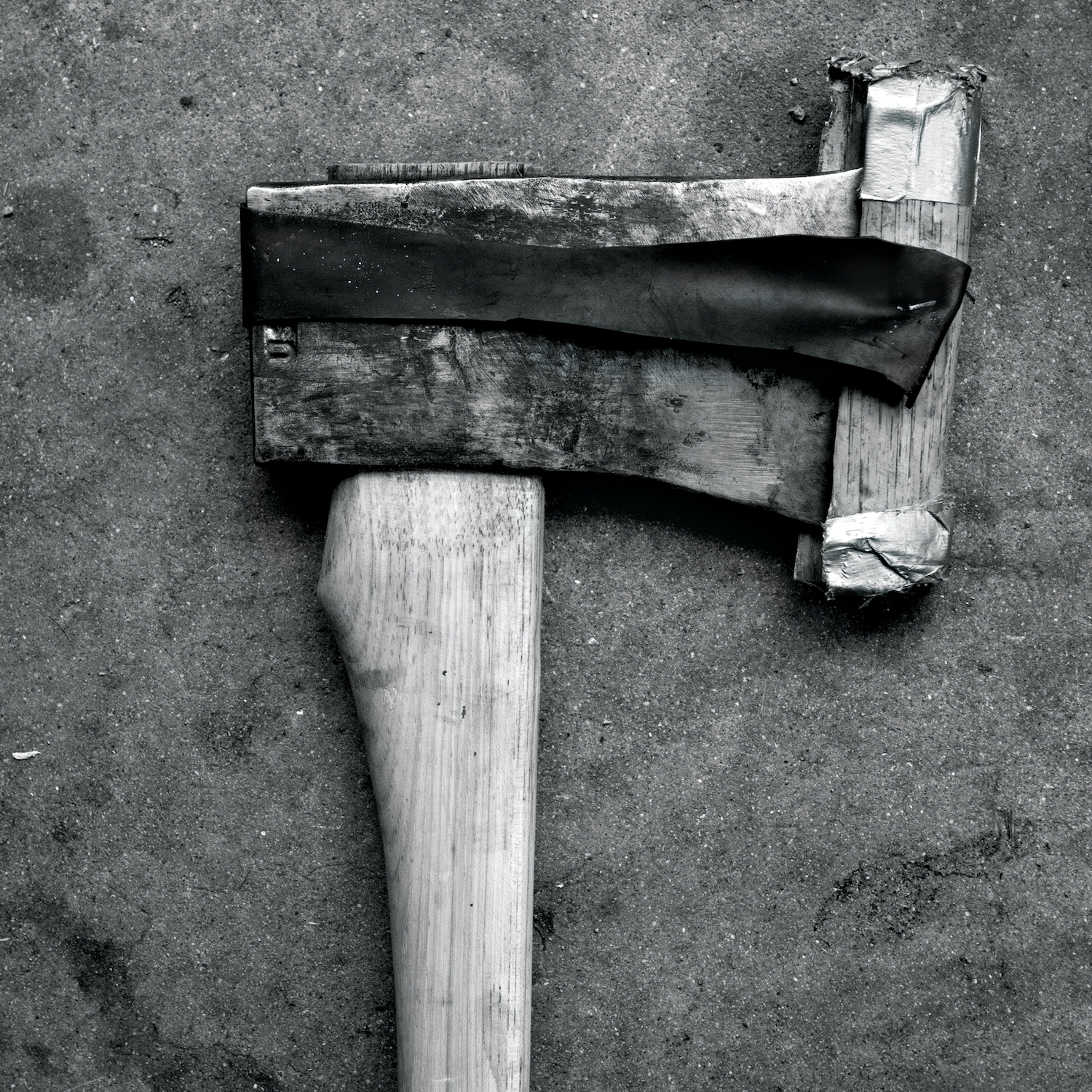
Whether it’s a dusty shelf in the backroom of a roadside flea market, or a pixelated product photo online, when you find the old axe of your dreams, there are always a few realities to embrace. Either the axe will have a helve or it will not, and if it does it is likely to be dried up, cracked, or poorly hung. And despite their valiant service once upon a time, most old helves are sadly the first thing to go.
You have to ask yourself: Is this an axe you want to use or just collect and admire? If you want to use it, then you’ll want to cut off the helve and hang a new one, and in doing so you are making your own axe (and that is reason enough to buy old). If this axe is the next addition to your personal museum, then I advise leaving the helve intact. No matter how worn or damaged it might be, it should have some good stories to tell.
Zooming in I will look for vestiges of a maker’s mark or some design element that could provide some background and provenance. Most old axes out there, especially the lesser priced, won’t have this type of indicator, and if they do they’ll be hidden under the rust and grime. I recently found a dream axe on eBay; it was the elusive and highly collectible Plumb Autograph. This axe had beautiful, clean, illustrative markings, and it was priced to sell (suspiciously so). And so, after scrutinizing the mark photographs, I discovered it had an alarming crack down its cheek. Was this going to be the greatest axe-restoration project of all time? I reached out to a blacksmith in Upstate New York and asked if there was any hope of restoring this beauty. Sadly, he said it was a goner; a weld would have completely compromised the temper of the steel. We’d be better off reforging the entire head, and that would have meant losing all those beautiful markings. I bought the axe anyway, and now it’s an overachieving paperweight.
Sellers often take the restoration upon themselves, and this usually doesn’t end well. When buying an old axe, you should expect it to be dirty, covered in pitch, dull, and almost certainly rusty. It’s so easy to overlook a rusty tool and assume it’s done for, but this couldn’t be further from the truth. Rust, even a lot of rust, can easily be dealt with. More and more sellers know this, but they rush the restoration process using heavy abrasives and invasive grinders that may possibly compromise the integrity of the steel. What drives me crazy is when they polish the axe to a mirror finish thinking they will command double or triple the price. Thank you very much, but I will be the one who decides if I can see my reflection in my axe.
Price is predictably a determining factor in buying an old axe. I give myself serious price constraints because it forces me to be resourceful and it adds some thrill to the chase (throwing money at an axe is cheating). At the time of the publication of this book, I can source a great axe for under $20. This may not get me a collector’s elusive gem, but it will almost guarantee an axe that I can put to good use, and in time it will become my own personal gem. And look, if in the end it doesn’t work out, if the axe isn’t everything you had hoped for, then you’ve got yourself a great new paperweight, too.
When evaluating an old axe, look closely at the lines: Are they deformed, compromised, overworked, abused? Or are they tight, clean, and crisp? Watch out for axes with polls that are mushroomed out — they’ve likely been used as sledgehammers. Axes are meant for cutting wood, not pounding steel, and the polls of most axes were not tempered like the bits; they’re softer and less resilient. Damage to the poll can just be cosmetic, or it can cause serious damage to the eye of the axe, and that’s a deformity that no restoration can save.
My father used to sharpen his little Swiss Army pocketknife on our farm’s high-speed electric grinder, and within no time the blade would be honed down to a toothpick. Axes, like knives, should be sharpened by hand. This fundamental truth is something that my dear old father, and many others, have yet to grasp. Electric grinders remove too much material too quickly, and they can heat the blade past the point of no return, ruining the temper of the steel. An axe that has been run through the grinder usually has an overly rounded bit, whereby the toe and the heel have basically been ground right off. Just as you want a square, clean poll, you should be looking for tight clean lines in your bit — toe, heel, and in between. I should note that electric grinders are used effectively by professionals who use the right machines, abrasives, jigs, and sharpening techniques. But for the rest of us: We can do just as well with a bastard file and a sharpening stone.
Kintsugi is the ancient Japanese art of restoration, specifically the use of a gold or silver lacquer to mend broken pottery, thereby transforming worthless shards of porcelain into a functional, beautiful vessel. I think of axe restoration as a similar pursuit, just as timeless and noble as Kintsugi. The thrill of reaching into a brown and briny broth and pulling out an axe that has been bathing for twelve hours in vinegar, and then seeing the effect of acid on rust, will never get old. There is an almost miraculous reward in the outcome. Through restoration, we can’t help but develop a deeper connection to the axe: We make it better and we make it our own. When I swing an axe that I’ve restored I feel much closer to the ancient continuum of the oldest tool known to humankind. I may not know the exact history of that axe, but I can imagine: who has swung it, where it’s lived, and what else it has seen.
The lifespan of carbon steel is a moving target, but if cared for, your axe should last as long as almost anything you can possibly possess, and that means many many (many) lifetimes. Who will be swinging your axe in five hundred years? The axe will always be there, it’s just you who is passing through. It’s your duty to maintain and, if need be, restore these tools while you have them, to use them and keep them functioning, and to ultimately leave them better than you found them.
The Charge will help you move better, think clearer and stay in the game longer. Subscribe to our wellness newsletter today.
